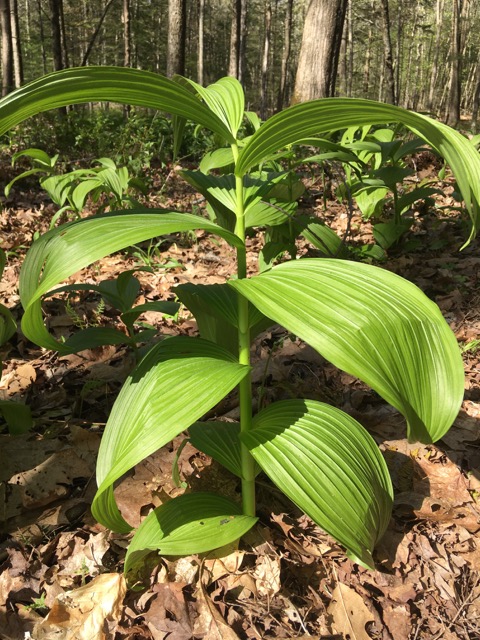Eating From the Devil’s Buffet
Spring foraging expedition takes near-fatal turn
By Wiley Wood
A local family’s foraging expedition in late April for ramps, a kind of wild onion, ended with all three members spending the night in the intensive care unit at Sharon Hospital.
It was late in the afternoon, and Bridget Taylor, intrigued by an article on foraging in The Lakeville Journal, suggested to her son Eli that they go pick some ramps. The article described them as “a true sign of spring,” whose “low-growing and lance-shaped green leaves jump out at the forager at this time of year.”

Taylor, who had never eaten ramps, chopped and cooked the leaves, but not before asking her husband, John Coston, to quickly look online to see that they had the right plant. Though an internet picture seemed to confirm the identification, all three noticed that there was little smell of onion or garlic, but they ascribed it to having only harvested the leaves and not the bulb. Each ate no more than a small quantity, finding the taste strong and unpleasant.
Taylor had an immediate reaction and said they had to call 9-1-1. The doctors at the Sharon Hospital emergency room knew exactly what was happening, having recently treated two other families for the same condition.
Dr. Mark Marshall, vice-president of medical affairs at Sharon Hospital, spoke the next day, April 23, on Robin Hood Radio: “This week we have hospitalized at least six patients for the toxic ingestion of a plant that they mistakenly picked while foraging for wild ramps.” The culprit, he explained, was false hellebore, a plant that looks similar to ramps when first sprouting. “It grows in the same areas and has fooled several people—and its toxicity is severe.”
The alkaloids in false hellebore (Veratrum viride) have a powerful hypotensive effect. “The initial signs are nausea and vomiting,” said Dr. Marshall. “The more serious side effects are a slowing of the heartbeat and a drop in blood pressure. This can cause people to get dizzy or pass out. Breathing slows, and it can lead to sweating, drooling and diarrhea.”
Bridget Taylor was released after a single night in the ICU, but her husband and son, who experienced, in Coston’s words, “extreme drops in blood pressure that were only relieved by drug therapy,” spent two nights in intensive care.
After the fact, The Lakeville Journal cautioned readers not to eat foraged ramps without prior experience or the guidance of an expert. “Do not trust the internet for this,” the paper said, “only trust another human.” The initial article had made no mention of toxic lookalikes.

False hellebore, which thrives in wet soils, meadows, sunny stream banks and open forests, eventually grows to a height of two to six feet, with a central stem and heavily ribbed, light-green leaves, spirally arranged. When the plant first emerges in early spring, though, before its stem becomes conspicuous, its leaves can resemble the smooth, darker green leaves of ramps (Allium tricoccum), whose scallion-like stem and bulb remain underground.
David Haskell, author of “The Forest Unseen,” points out that our domestic crops have had the toxins bred out of them, giving us a distorted view of the edibility of plants. In a passage about plants’ toxic defenses and the detoxifying biochemistry of some plant eaters, Haskell writes that the forest “is not a banquet waiting for guests to arrive but a devil’s buffet of poisoned plates from which herbivores snatch the least deadly morsels.”
In Dr. Marshall’s words: “False hellebore and ramps are difficult for the novice forager to distinguish.” Other lookalikes include the daylily, whose long, thin leaves also emerge from the ground in early spring, and lily of the valley.
Coston summed up his experience saying, “We made what was almost a fatal mistake.”
Photos by Wiley Wood. Top: ramps often have a slightly reddish stem, and their structure is similar to scallions. They should not be foraged without positive identification by an expert.

